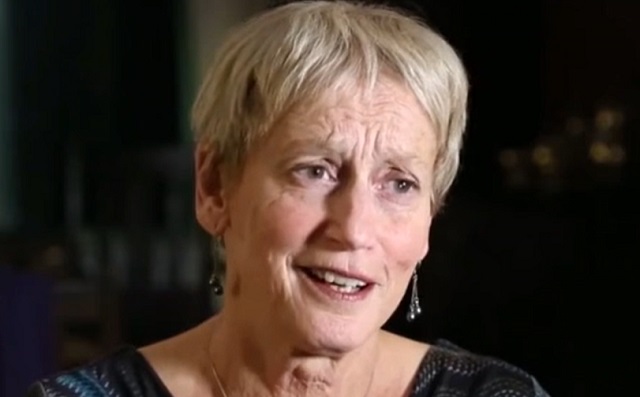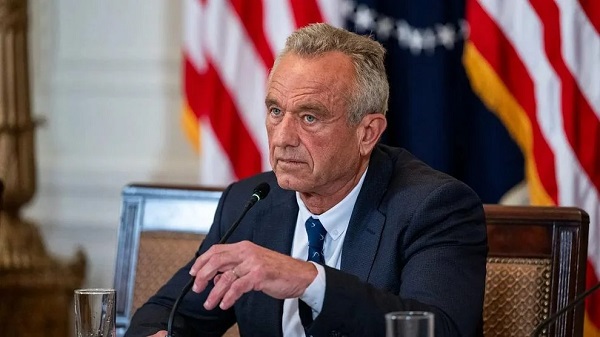Great Reset
Canadian euthanasia doctor takes delight in having killed hundreds through assisted suicide

Ellen Wiebe
From LifeSiteNews
“I know the exact number,” she told Kirkey, but didn’t want to provide it. “It’s become a weird thing, people talking about their numbers, or criticizing people who talk about their numbers.”
The National Post’s July 6 profile of euthanasia doctor and abortionist Ellen Wiebe begins with a barnburner line: “Dr. Ellen Wiebe has never shied away from speaking publicly about the act of ending someone’s life.” That’s a bit of an understatement — Wiebe has positively reveled in it. In the recent BBC documentary Better Off Dead? Wiebe informed disability rights activist Liz Carr that killing patients “is the very best work I’ve ever done.”
Wiebe’s enthusiasm — and chuckling throughout the interview — made viewers very uncomfortable. Clearly, so is National Post writer Sharon Kirkey. The profile of Wiebe is titled “This doctor has helped more than 400 patients die. How many assisted deaths are too many?” Of course, Wiebe hasn’t “helped people die.” She has actively ended their lives by lethal injection. She now realizes that people recoil from that fact. “I know the exact number,” she told Kirkey, but didn’t want to provide it. “It’s become a weird thing, people talking about their numbers, or criticizing people who talk about their numbers.”
“Hundreds is good,” she added. As Kirkey noted, Wiebe had ended at least 430 lives by May 2022, according to her own testimony before a special parliamentary committee on MAiD.
Wiebe has accrued many nicknames — the “pro-choice doctor providing peaceful deaths,” and a “de facto ambassador” of MAiD, for example. Unsurprisingly, she insists that the killing she does be carefully cloaked in Orwellian language. “In Canada, we don’t use the word euthanasia,” she told a podcaster. “That’s what we use for our pets. Here, we call it assisted dying.” Still, Kirkey notes that not everyone is happy about the work she finds so rewarding. She told Scottish euthanasia advocates that “we know that angry family members are our greatest risk” because they are most likely to bring complaints against euthanasia practitioners.
Indeed, as Kirkey notes, Wiebe is willing to bend the rules:
She’s published numerous papers in the assisted dying space, mentoring other doctors and hosting MAID training webinars, but has also been accused of bullying and sneaking her way into faith-based facilities. She’s faced multiple complaints against her to the College of Physicians and Surgeons of British Columbia. but has always been found in compliance with the rules …
Wiebe has had several complaints lodged against her, including her provision of death in the case of “Ms. S,” a 56-year-old woman with advanced multiple sclerosis who, in 2017, starved herself to meet eligibility criteria that her death was “reasonably foreseeable,” a case with eerie echoes to the 27-year-old autistic Calgary woman who stopped eating and drinking in May over a judge’s order blocking her access to MAiD.
In 2017, Wiebe was accused of “borderline unethical” behaviour for entering Vancouver’s Louis Brier Home & Hospital, an Orthodox Jewish long-term care home, and providing MAID to 83-year-old cancer patient Barry Hyman, despite knowing the facility did not allow assisted deaths on its site. Hyman’s family had invited Wiebe in to honour his wish to die in his room. As Wiebe assembled her prepared syringes, “My heart was racing that someone would open the door,” Hyman’s daughter, Lola, told The Globe and Mail.
The same year, the chief medical officer and coroner with B.C.’s coroner’s service raised questions about Wiebe’s provision of MAID to a woman with dementia.
As she told journalist Peter Stockland in 2018, her practice comes “right up to the edge of the law but never beyond.” Thus far, at least, the authorities have agreed with her.
Although Wiebe is 72 and suffers from a heart condition, she’s determined to continue the work she believes in the most — euthanasia and abortion. Euthanasia, in particular, she says, is “the last thing I’ll give up,” and both euthanasia and abortion are “about honouring people’s wishes, empowering people to have control over their own lives. It’s wonderful that I have the opportunity to do that.” Kirkey notes that, as in the BBC documentary, Wiebe grinned and laughed in her interview with the National Post. “I love life,” she told Kirkey.
Disturbingly, Wiebe isn’t the only euthanasia practitioner who enjoys her work. Kirkey noted that in “one study, MAiD providers with between 12 and 113 assisted deaths each described the delivery of a medical death as ‘heartwarming,’ ‘the most important medicine I do,’ ‘an ultimate act of compassion,’ ‘liberating’ and ‘almost an adrenaline rush. I was surprised at how good I felt.’” As Christopher Lyon, a social scientist at the University of York, observed, this is jarring “because death is usually a deeply painful or difficult moment for the patients and their loved ones.” As Kirkey noted:
Lyon’s 77-year-old father died by MAiD in a Victoria hospital room in 2021, over the family’s objections. (Wiebe was not the provider.) His father had bouts of depression and suicidal thinking but was approved for MAiD nonetheless. Lyon wonders what draws some providers to MAiD “and what happens to a person when killing becomes a daily or weekly event.”
“Some providers have counts in the hundreds — this isn’t normal, for any occupation,” he said. “Even members of the military at war do not typically kill that frequently. I think that’s a question that we’ve not really ever asked.”
Wiebe says she didn’t plan to be a euthanasia practitioner — she grew up in a conservative, Bible-believing Mennonite home in Alberta but abandoned faith by age 17 — but has been long committed to the medicalized killing. In her work as an abortionist, she did “pioneering work on medical abortions and bringing trials of the abortion drug, mifepristone, to Canada.” When the Supreme Court legalized euthanasia, she wanted in. “I called up a friend who was also an abortion provider and said, ‘Palliative care is not going to do the work. We better figure out how to get trained and get in there,’” she told the National Post.
She and her abortionist colleague went to the Netherlands in 2016 to meet with euthanasia practitioners and learn the trade. “Now it’s half my clinical work and very, very important,” she said. Unsurprisingly, she has repeatedly said that she sees much similarity between abortion and euthanasia. Family members, she tells the National Post, are often shocked by how swiftly death comes after she administers the lethal injection. “When everybody is ready, I say, ‘Okay, ready to go to sleep?’” she recounted, apparently unaware of how similar this sounds to putting a pet to sleep. The entire process, she says, usually takes about five minutes.
Wiebe believes that Canada’s euthanasia regime will only expand in the years ahead. Kirkey writes:
She fully anticipates that MAiD will be extended to mature minors. “I’ve always been assuming for eight years that a 17-year-old with terminal cancer is going to say, ‘I have the right,’ and of course any judge in the country will say, ‘Yes, you do.’” She also expects some form of advance requests for MAiD in cases of dementia, which would allow a person to make a written request for euthanasia that could be honoured later, even if they lose their capacity to make medical decisions for themselves. Support for advance requests is strong, according to polls. But if someone is unable to express how they’re feeling, who decides if they are suffering unbearably — and what if they changed their minds? MAID doctors may be asked to “provide” for someone they have not met before, and with whom they will not be able to communicate. That’s going to be hard for us as providers,” she said. “This will be a new challenge. And I’m up for challenges.”
Wiebe’s predictions and enthusiasm are a warning for Canada. We have seen tens of thousands of Canadians die by lethal injection and many others speak out about how they feel pressured or pushed into euthanasia. It is imperative that Wiebe’s vision for Canada be opposed at every step. Lives depend on it.
Censorship Industrial Complex
Death by a thousand clicks – government censorship of Canada’s internet

The Justice Centre for Constitutional Freedoms announces its latest publication, Death by a thousand clicks: The rise of internet censorship and control in Canada, authored by veteran journalist and researcher Nigel Hannaford. The report outlines how recommendations from the Broadcasting and Telecommunications Legislative Review Panel in 2020 set the stage for a series of federal bills that have collectively transformed Canada’s once open internet into a state-managed digital environment that restricts what Canadians may access, share, and say online.
The report highlights the following federal legislation:
Online Streaming Act (C-11): Passed in 2023, this Bill gives the CRTC power to regulate online videos and other content, including material created by everyday Canadians. It also lets the government influence online “discoverability,” meaning it can push certain content to the top of your feeds while making other content harder to find.
Online News Act (C-18): Also passed in 2023, this Bill forces platforms to pay approved news outlets, a measure that led to increased dependence of media organizations on the government and widespread blocking of Canadian news as a result of Meta’s news ban on Facebook and Instagram.
Online Harms Act (C-63): Although this Bill was halted by the 2025 election, it would have empowered a new “Digital Safety Commission” to order content removals, demand platform data, levy severe financial penalties on service providers for non-compliance with regulations created by the federal cabinet, and impose house arrest on Canadians who had not been charged with or convicted of any crime. It also would have allowed the Canadian Human Rights Commission to pursue Canadians over non-criminal “discriminatory” speech, together creating a sweeping censorship regime under the guise of addressing so-called “harms” that were already illegal.
Strong Borders Act (C-2): Introduced in June 2025 and currently at second reading, this Bill authorizes law enforcement to obtain subscriber information and metadata without a warrant, chilling anonymous online expression and eroding digital privacy.
An Act respecting cyber security, amending the Telecommunications Act and making consequential amendments to other Acts (C-8): Introduced in April 2025 and now before committee, this Bill expands government access to private networks and enables federal officials to direct telecommunications providers to kick individual Canadians off the internet without due process or appeal.
Combatting Hate Act (C-9): Introduced in September 2025 and currently before Parliament, this Bill broadens “hate-propaganda” offences, removes Attorney General oversight for prosecutions, encourages widespread self-censorship, and makes Canada more like the United Kingdom, where thousands of citizens are arrested over their social media commentary.
Report author Nigel Hannaford said, “It is important for Canadians to know that these bills are not isolated technical updates. Together they form a coordinated shift toward state-managed digital speech.”
“If we value open debate, privacy, and democratic accountability, we need to repeal the laws already passed and stop the ones now before Parliament,” he added.
Benjamin Klassen, Research and Education Coordinator for the Justice Centre, said, “It is important Canadians stay informed about these important issues. An informed public is essential to a free society.”
“Through research reports like this one, our Education team works to explain complex legislation in a way that empowers Canadians to participate in the national debate around important policies and defend their rights and freedoms,” he added.
To protect free expression online, Canadians should demand the repeal of Bills C-11 and C-18, insist that MPs vote against Bills C-2, C-8, and C-9, and elect representatives committed to restoring a free and open internet.
Great Reset
Viral TikTok video shows 7-year-old cuddling great-grandfather before he’s euthanized

From LifeSiteNews
Karly Vavra, the little girl’s mother, told People that she chose to share the video in order to honor her grandfather—but also to normalize euthanasia.
A video of a 7-year-old girl sharing a “final cuddle” with her great-grandfather before he is euthanized has gone viral on TikTok, racking up millions of views.
@karlsbergggg Sobbing 😭 #MAID #medicallyassisteddeath #grandpasgirl #greatgrandpa #greatgrandparents
The video shows the child curled up next to an elderly man, sitting straight on the couch, their final moments together captured. “This is my 96 year old grandpa with my 7 year old,” the caption reads. “He’s doing MAID soon. I tried explaining gently to my daughter that this was the last visit she’d have with him. This is what she did the second she walked in. He’s so happy.”
Karly Vavra, the little girl’s mother, told People that she chose to share the video in order to honor her grandfather—but also to normalize euthanasia. “The feeling is very bittersweet,” she said. “I look back with smiles and tears.” She admitted that she knows “my daughter didn’t fully understand these were her last moments with him.”
Her grandfather, who had chosen euthanasia, did understand the gravity of the moment. “My grandpa knew those were his last moments with her,” Vavra said. “Him looking down in that short moment, I believe, was his way of trying to hide emotions as he was a very proud man.” Her grandfather was scheduled to be killed by lethal injection just days later.
READ: Glenn Beck offers to fund life-saving surgery for Canadian woman approved for euthanasia
Vavra says her grandfather was always a favorite of neighborhood children, who were drawn to him. “I am so grateful both my kids got to know him, though, as not many children get [much] time, if any, with a great grandparent,” she said. “My grandpa was honestly the sweetest man. He loved children, gardening, golf, music and was VERY opinionated… Him and my kids were always laughing with each other, and he loved how loud and proud my daughter was! I hope she is strong like he was and always laughs and sees the brighter side.”
Vavra posted the video because she wanted to celebrate her grandfather’s euthanasia. “I posted this because I truly believe MAID can be a wonderful thing,” she told People. “Letting people go the way they want, with dignity, and not suffering… A lot of religions don’t believe in MAID and some comments were more aggressive than others. Seeing how negative some of the responses were made me really want to advocate for the MAID program.”
“Her connection to MAID began long before her own grandparents made their decisions, as she previously worked on a case in British Columbia after she says many of her coworkers opted not to participate,” People reported.
“I am a very open, understanding person and believe in ‘your body your choice’ which is why I volunteered,” she says...This year alone brought unimaginable loss for her family. “My parents and aunt have had a harder time because both their mom and dad decided to do MAID this year, so it’s definitely been a rough year, but we are sticking together as a family and really trying to cherish all our moments together,” Karly shares.
There are over 10,000 comments on Vavra’s TikTok video, many of them expressing horror at the normalization of putting elderly people to sleep like sick household pets.
“I always try to be honest with my children,” Vavra said. “I explained that Big Papa (what my kids called him) was in a lot of pain and that he would be going to meet Big Grandma on Saturday (my grandma also did MAID this year). I explained that a very nice doctor and nurses were coming and they were going to give him some medicine and he would fall into the best sleep ever but forever, and that he wouldn’t be in pain anymore.”
It is notable that despite the irreligious basis of euthanasia, spiritual language is often incorporated into euthanasia conversations in order to soften the reality of what is taking place.
This is a new Canadian reality: Children losing their parents, grandparents, and great-grandparents not to natural death, but to lethal injections. Their goodbyes are defined by moments that do not have to be the last but have been chosen. There could have been more conversations. More cuddles. More love. But there was not—and that was a decision. “Seeing her link arms with him was very touching but of course very painful,” Vavra said. “Both loving each other so much. I wish we could have had him forever.”
They could have had him longer.
-

 Censorship Industrial Complex19 hours ago
Censorship Industrial Complex19 hours agoDeath by a thousand clicks – government censorship of Canada’s internet
-

 Automotive1 day ago
Automotive1 day agoPoliticians should be honest about environmental pros and cons of electric vehicles
-

 Great Reset22 hours ago
Great Reset22 hours agoViral TikTok video shows 7-year-old cuddling great-grandfather before he’s euthanized
-

 Daily Caller20 hours ago
Daily Caller20 hours agoChinese Billionaire Tried To Build US-Born Baby Empire As Overseas Elites Turn To American Surrogates
-

 Alberta21 hours ago
Alberta21 hours agoSchools should go back to basics to mitigate effects of AI
-

 Alberta2 days ago
Alberta2 days agoAlberta’s new diagnostic policy appears to meet standard for Canada Health Act compliance
-

 Bruce Dowbiggin1 day ago
Bruce Dowbiggin1 day agoHunting Poilievre Covers For Upcoming Demographic Collapse After Boomers
-

 Health2 days ago
Health2 days agoRFK Jr reversing Biden-era policies on gender transition care for minors




